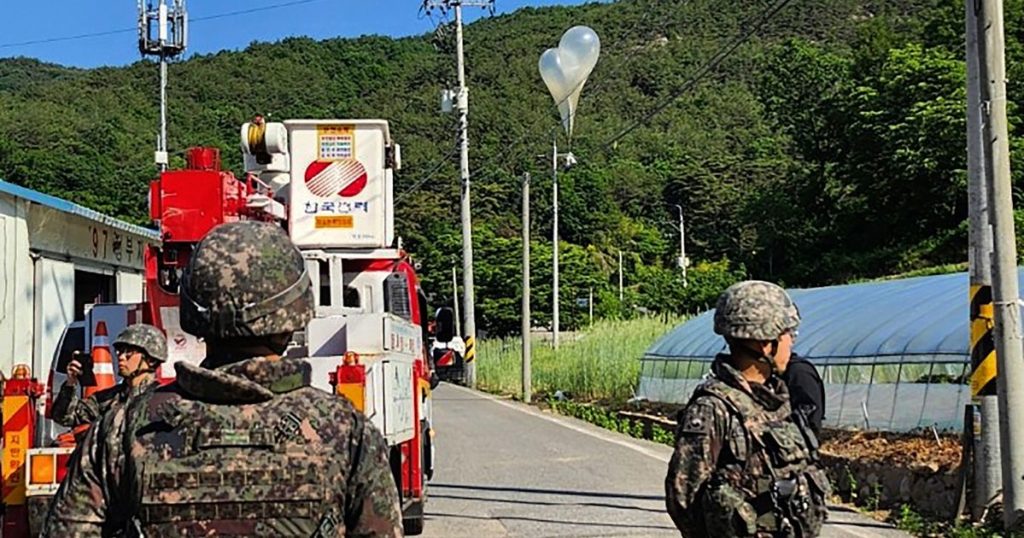North Korea has launched hundreds of balloons carrying trash towards South Korea in retaliation for activists flying anti-North Korean leaflets across the border. The balloons contained cigarette butts, cloth scraps, waste paper, and vinyl, with no dangerous substances included. South Korea’s military advised people to avoid touching objects suspected to be from North Korea and report them instead. The recent balloon launches add to North Korea’s provocative actions, including failed satellite launches and short-range missile tests meant to show the ability to preemptively attack the South.
South Korea’s military responded to the latest balloon campaign by dispatching chemical rapid response and explosive clearance teams to recover debris from 260 North Korean balloons found across the country. These balloons carried trash and manure but no dangerous substances. Kim Yo Jong, the sister of North Korean leader Kim Jong Un, confirmed the country’s involvement in the balloon launch as a response to South Korean activists’ leafleting campaigns. She suggested that balloons could become a standard response moving forward, promising to scatter “rubbish dozens of times more” in the South.
South Korea’s Unification Ministry issued a warning to North Korea to halt its provocations, including missile launches and other acts, or face “unbearable” consequences. Despite the tensions, South Korea’s military has no plans to shoot down the balloons, citing concerns about causing damage or triggering further retaliation from North Korea. The decision was made to let the balloons drop and recover them safely. North Korea is highly sensitive to any attempts to undermine Kim Jong Un’s control over the country, with past instances of aggressive responses to outside interference.
The history of balloon exchanges between North and South Korea includes North Korea firing at propaganda balloons in 2014, resulting in South Korea returning fire. In 2020, North Korea destroyed a South Korean-built liaison office following civilian leafleting campaigns. In 2022, North Korea even suggested that balloons from South Korea caused a COVID-19 outbreak in the country, though the claim was questionable. The ongoing tensions highlight the delicate situation on the Korean peninsula and the potential for escalation due to symbolic acts like balloon launches.
The recent balloon launches are seen as part of a series of provocative actions by North Korea, including failed satellite launches and missile tests meant to demonstrate its military capabilities. Kim Yo Jong’s confirmation of North Korea’s involvement in the balloon campaign indicates a willingness to use this method as a response to South Korean activities. South Korea remains vigilant in monitoring and recovering the debris from these balloons, balancing the need to respond to provocations while avoiding actions that could escalate tensions further. The delicate balance of power and the potential for misunderstanding or miscalculation underscore the need for cautious and diplomatic approaches to managing inter-Korean relations.


